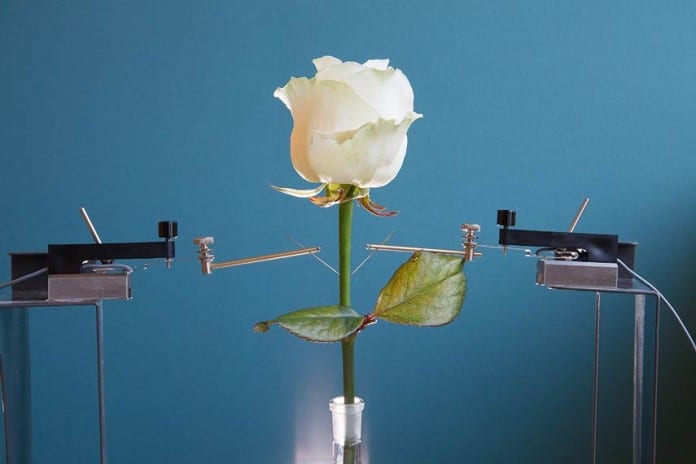Scientists created a Cyborg Rose -Wired with Self-Growing Circuits
Scientists have developed a Cyborg Rose — Magnus Berggren and his team at the Laboratory for Organic Electronics at Linköping University in Sweden has managed to grow living roses with electronic circuits in their vascular systems.
To make the cyborg rose, the researchers cut the stems of roses and submerged it for a few days in a solution with a variant of the organic polymer poly (3,4-ethylenedioxythiophene) called PEDOT-S:H, which has good electrical conductivity when hydrated.
Over a couple of days, the plant’s xylem network took up the polymer, which solidified as a gel. When the team peeled back the outer layers at the bottom of the stem, the researchers could see a tiny “wires” of the organic polymer that had snaked up 2-inches (5 centimeters) into the stem.
The team managed to use these xylem wires to turn the plant into a transistor – a basic building block of computing and electronics. They tacked gold electrodes and probes along the length of the plant, connected it to an external resistor and ran a current through it.

“When Eleni Stavrinidou showed me these beautiful microscope pictures, we understood immediately: we could make circuits out of this,” Magnus Berggren and team said. “The performance, the shape of the wires, were just outstanding, unbelievable.”
Magnus Berggren and his team then added this to the petals, with the leaves changing colours when a voltage was applied through the polymer.
The team, led by Professor Magnus Berggren, sees several possibilities in the project, including the surveillance and regulation of plant growth, and the potential to tap into photosynthesis as a means of generating power. Magnus Berggren also said that this bionic rose could pave the way in harvesting energy from plants without having to kill them.
The researchers say these electronic plants could be sent signals telling them when to bloom to avoid an impending frost, or when to put out hormones to prevent a drought.
















































